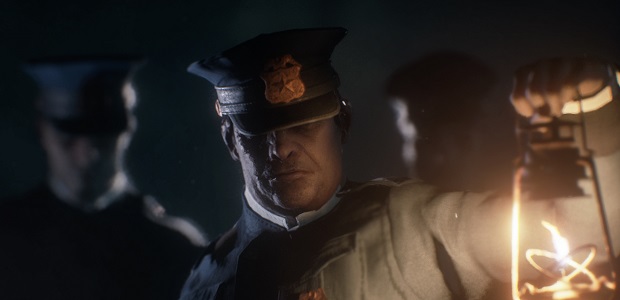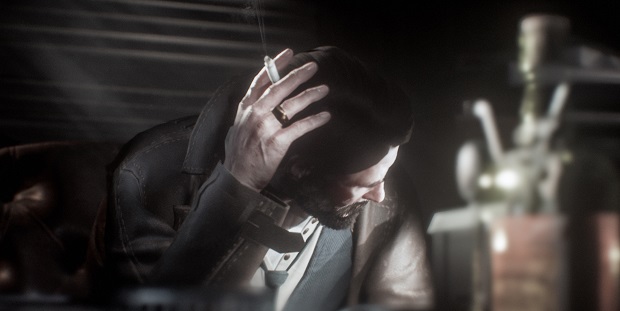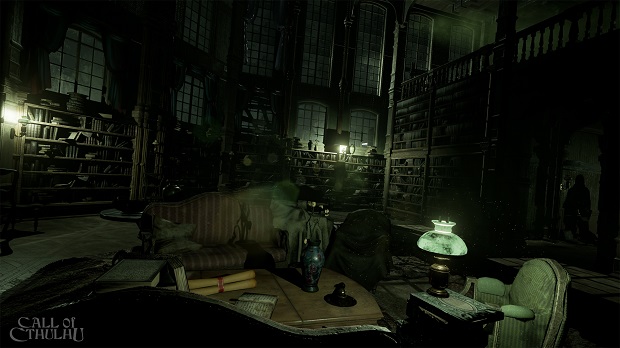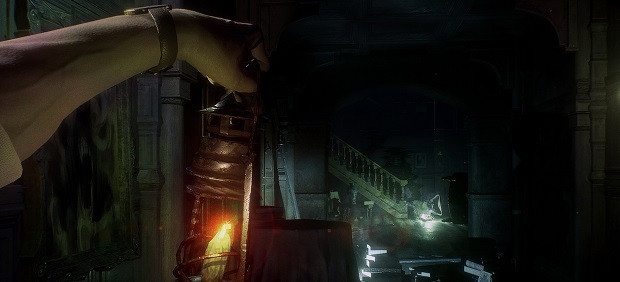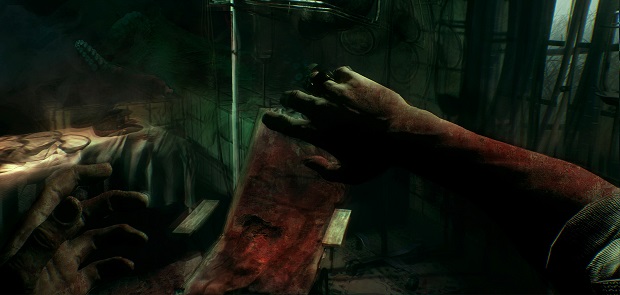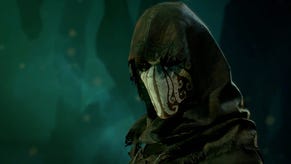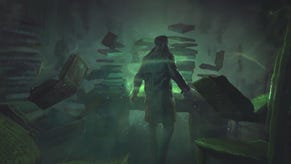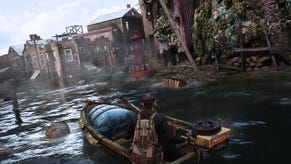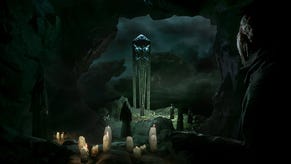Call Of Cthulhu's horrors might be too familiar
We can't stop here, this is Lovecraft country
Right near the beginning of the Call of Cthulhu [official site] hands-off demo I saw last week, an angry caretaker confronts the player character. Suddenly Lovecraft Country felt a bit Scooby Doo. The game's central mystery, or at least its initial hook, centres around a family who died when an accidental fire raged through their massive island home. Old man caretaker doesn't think you should be poking around inside.
Once you do get inside, there are clues to investigate, unnerving paintings to shatter your sanity, and monsters to hide from. It's the caretaker that sticks with me though, and that gives the clearest impression as to how the whole thing might play out.
I'd expected something similar to the Sherlock Holmes games, which have gone full Lovecraft in the past. Call of Cthulhu looks like it's taking enough cues from the Chaosium tabletop RPG to have an identity of its own though, mashing up traditional adventure game logic with character sheets and skill checks. With the caretaker, you can choose to deal with his threats – he's waving an axe in your face – using one of several approaches: persuasion, small talk, intimidation or psychology. Other options unlock if you have found clues elsewhere before engaging in dialogue.
There may be RPG elements but they don't extend as far as character creation. You're playing as Edward Pierce, a former soldier turned private investigator, and the case that opens the game brings you to the aptronymic Dark Water Island. It's actually quite picturesque, as far as these things go, and the game is handsome in its horrors. In the short demonstration, there's little of the detailed muck and grime that Resi 7 did so well, but it's all pleasantly moody.
It's also, in terms of setting and tone, pretty much exactly what I expected. Cyanide are determined to “stay true to the spirit of Lovecraft”, as I was told later, and in this case that truth is in the form of shades of noir, sanity meters, a desolate New England setting, and culty murmurings. It's so true to a certain idea of what the mythos is all about that I was feeling a heavy sense of deja vu long before the chase sequence that saw Pierce hiding in a closet, where his claustrophobia threatened to...kill him?
There's quite a bit to unpick in that last sentence. First of all, yes, there are chase sequences. The monster in this one was stalking a gallery packed with the sort of sculptures and paintings that would have had old H P reaching for his thesaurus. It's cracking stuff, the art. Suitably unsettling without resorting to wings and tentacles – the best of the sculptures are recognisable things rendered slightly wrong. The sort of thing that you need to look at twice to figure out exactly which part is disturbing.
And then a monster appears, pushing its way out of a painting in a way that's reminiscent of Sadako forcing herself through telly static (or that one bit in Bava's Demons 2, Italian horror fans). You can't fight back so you hide, sneaking around the sculptures, which don't look quite as sinister now there's an actual monster in the room. I didn't get a good look at it, partly because the person running the demo was quite good at hiding, but also because looking at it drains sanity so it's best not to study the thing too closely.
All the sneaking ending with a dash for escape and then poor old Pierce had to cram himself in a wardrobe. That's when the claustrophobia kicked in.
There will be various phobias accrued through the course of the game and in this case, staying hidden in an enclosed space causes sanity to drop, forcing you to emerge sooner rather than later. The sanity meter might cause hallucinations and the like, but the key to it is that Pierce dies if it hits rock bottom. That might work out well enough, I can't say for sure until I play the game, but I'm inclined to think that killing the player off is too harsh. Make him burst out of the closet, screaming and drawing attention to himself, but kill him outright? It's one more fail state on top of the possibility of actually being caught.
And that's how the demo ended, with Pierce making another dash for the door, being spotted, grabbed and killed. It was an effective sequence, tense and frightening in its way, but the combination of the chase and the claustrophobia seemed a little too scripted. As with the conversation choices, there will be different ways to approach encounters, using occult knowledge, investigative skills and even weaponry (though guns will be ineffective against most creatures and possibly only handy against human cultists).
Going back to the caretaker, the demo saw Pierce arguing his way out of the confrontation. If he'd failed a skill check or attempted a different conversational technique he might have been unable to enter the house immediately, and been forced to break in rather than convincing the caretaker to give him the key. If every possible branch is executed well, Call of Cthulhu might feel like taking part in a roleplaying session, and while the writing and voice acting doesn't convince me I'll be in the company of a stellar gamesmaster, I wouldn't mind a few hours of paranormal investigation.
When Pierce reached the room where the fire had started, he was left to sniff around for clues. That was the most Sherlock-y part of the game, as the player pieces together the evidence to form a conclusion. As in 2014's Crimes and Punishments, it's possible to arrive at false conclusions, but these don't lead to failure immediately. Instead, you're armed with incorrect information that might bite you in the backside down the line.
Cyanide told me that their game won't become a shooter, as Dark Corners of the Earth did in some of its later stages, and that investigation and conversation are the keys to progressing the story. The voice acting isn't final, thankfully, but the actual writing of the dialogue might need some work as well. When the caretaker called Pierce a prick I was less concerned about any possible anachronistic phrasing and more concerned that it came across as a bit more like a row down the city centre on a Saturday night than a sinister encounter on a doom-haunted isle.
There are entire areas of the game I've seen nothing of, still, including character recruitment and side stories. While you won't have a party following you around, you will be able to recruit certain characters if you deal with them properly, and they can be sent to investigate other matters, bringing back information that might save Pierce's skin later in the game.
That entire side of the game – the actual investigation of a case that threatens to become overwhelming and incomprehensible – has caught my interest. The phobias and sanity clauses, less so. It might all come together but I worry that the phobias will be too scripted, a way to spice up encounters and add a layer of difficulty to certain areas of the game.
With the RPG elements allowing some flexibility of approach, Call of Cthulhu is doing enough to differentiate itself from other investigation-based adventure games. It's not just Sherlock with monsters and violence - Holmes under the Hammer, say – but what I've seen sticks a little too close to common Lovecraftian tropes. “True to Lovecraft” might be Cyanide's goal but aspects of the mythos have leaked out into pop culture to such an extent that the bumps in the night and lurkers in the dark don't seem all that fresh. Hopefully what I've seen is just the tip of the tentacle and there will be some unknowable terrors along the way because first-person horror that gets this much right on the surface is always welcome on my hard drive.

